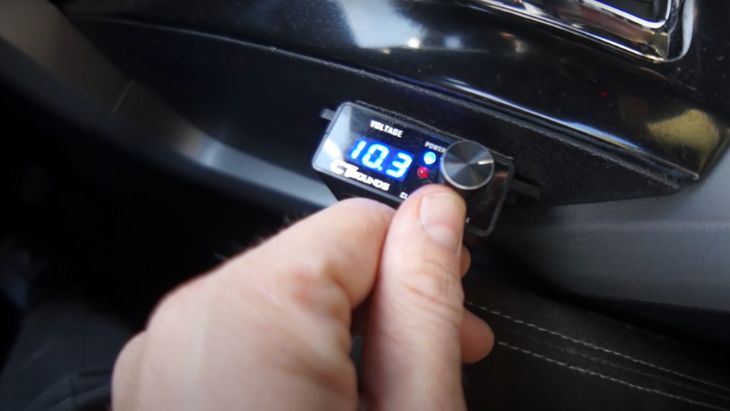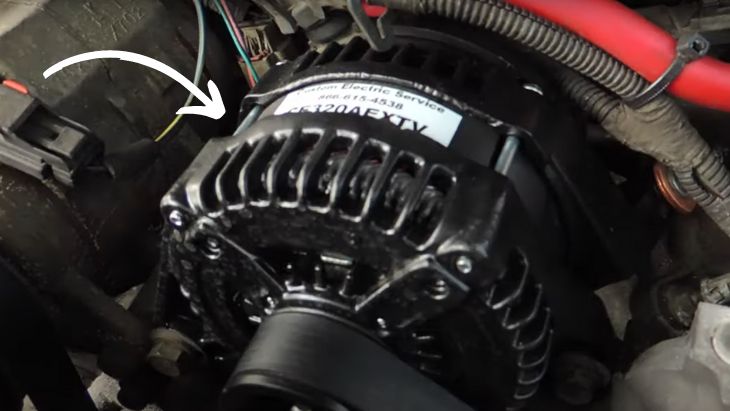When you notice that your car battery is draining abnormally and often dying on you, the best thing to do is to determine the cause of the problem. Once you establish the cause, you can find solutions to fix the issue and prevent it from recurring. Car audio systems are a major culprit of voltage drop. In this article, we will show you how to prevent voltage drop car audio.
Generally, a car audio system draws power from a car battery. The car audio system can drain the battery when the alternator and engine are turned off but the car audio system continues running. Also, the car audio can drain the battery if the alternator is unable to charge the battery at a faster rate than what the car audio system is consuming.
In most instances, aftermarket car audio systems draw more power than what a car’s factory power system can provide. In other instances, poor installation causes parasitic power draw. As a result, you experience voltage drop that interferes with the normal functioning of the entire car electrical system. Sometimes, an extreme voltage drop will make your car fail to start up. Here is what you need to know about preventing voltage drop.
How a Car Audio System is Powered
A car sound system is powered by electrical energy. The electrical energy is stored in the car battery. The car battery gets charged by the alternator. When the car engine is running, the alternator charges the battery continually to maintain full charge. When the battery is continually charged sufficiently, it can feed the electrical components of the car, including the car audio, with sufficient power.
The car audio system comprises three major components including the stereo (or radio/head unit/receiver), the speakers, and amplifier. Amplifiers and subwoofers (where present) require the most power supply from the battery. Thus, they make the battery and alternator work harder. The car radio also requires power, but its power needs are much lower than what an amp or subwoofer needs.
Unfortunately, there are instances where the car audio system is more power-hungry than what the car battery and alternator provide. In such instances, the battery and alternator are unable to keep up with the extra power demands. Probably, you have installed an aftermarket amplifier or subwoofer that is too powerful for the car battery and/or alternator.
How to Tell Whether Your Car Audio is Causing Voltage Drop

It can be very annoying for your car battery to die on you frequently without any notice. If you suspect the culprit is your car audio, there are certain things you need to look out for. One of the main telltale signs is when the headlights and dashboards lights are dimming, especially noticeable when the audio system is playing music or whenever you turn up the volume.
Another sign of voltage drop is when the car audio remains turned on despite turning off the engine and removing the car key from the ignition. In such a scenario, the car audio will take power from the car battery, yet the alternator is off and cannot charge the battery. Eventually, the battery will get drained.
How to Prevent Voltage Drop Car Audio
If you suspect there is a voltage drop in your car battery, you can install a digital voltmeter to prove it. A voltmeter will display the real-time voltage of your car battery. If the voltage drops below 13.7V, you will need to fix the problem and prevent its future occurrence right away.
If you fail to fix and prevent the voltage drop issue, you may damage the amp and other car electrical components such as the alternator and batter. Here is how to fix and prevent voltage drop caused by a power-hungry car audio.
1. Invest in a deep cycle car battery
Most cars come with a regular start-up battery from the factory. These batteries are only designed to start up the car and run the factory electrical components such as the factory radio, factory speakers, power windows, power side-view mirrors, and headlights among others. However, these batteries are not powerful enough to supply a power-hungry aftermarket amplifier with enough power.
Here, the solution is to replace the weak factory battery with a powerful deep-cycle battery. Deep cycle batteries are designed to keep electrical charge for longer periods than factory startup batteries. If a deep cycle battery is not enough, you can add a second battery. In this case, use the startup battery for regular car startup and the deep cycle battery for the car audio system.
2. Replace the alternator

The alternator is a car component that converts mechanical energy from the engine rotations into electrical energy. The generated electrical energy flows to the battery through the car chassis, then into the battery through the negative terminal. The alternator is also connected to the car battery directly via the respective positive terminals. The generated electrical energy from the alternator charges the car battery.
Unfortunately, the factory alternator is only designed to replenish the battery with power for the factory electrical system. It does not produce sufficient power to feed powerful aftermarket electronics such as powerful amps and subwoofers. In that case, you need to replace the factory alternator with a higher output aftermarket alternator. That way, the battery will be recharged faster to keep up with the extra power demands.
3. Use thicker power wire for your amp
If you have connected your amp to power via a thin power cable, there will be a lot of resistance as it tries to draw more power from the battery. As a result, the amp will be power inefficient and lead to overheating issues and voltage drop.
The best solution to fix and prevent this occurrence is to replace the amp power wire with a thicker wire. Preferably, use a 0 gauge wire to hook your amp to power. Thicker wire allows for easier current flow from the battery to the amp. As such, there is more power efficiency to prevent voltage drop.
4. Add a power capacitor
Adding a power capacitor is the most affordable fix to prevent power drop. Power capacitors are more affordable than replacing the alternator and/or adding a battery. A power capacitor, also known as a power cap, works by storing charge for extra power demands. Thus, it supplements the power that a car battery supplies to the amp and/or subwoofer. As a result, it prevents voltage drop.
5. Do the big three upgrades
The big three upgrades is a statement used to refer to a car modification that involves upgrading the three main charging wires. These three wires are:
- The wire that connects the positive terminal of the battery to the positive terminal of the alternator.
- The wire that connect the negative terminal of the battery to the ground chassis.
- The wire that connects the alternator chassis via the engine to the ground chassis.
In most cars, these wires come thin from the factory. The idea is to replace them with thicker wire to enhance current flow from the alternator to the car battery. Doing so allows every voltage from the alternator to be fully utilized by the power-hungry amp or subwoofer. In this case, we recommend replacing the factory wire with a 0 gauge wire for maximum power efficiency.
Summary
If you are planning to upgrade your car audio system by installing a powerful aftermarket amp and/or subwoofer, also plan to upgrade or add an extra car battery. Also, upgrade the power cables with thicker wire for more efficiency. Additionally, you may have to upgrade the alternator. Also, adding a power capacitor can help. Remember that most of these upgrades may require you to consult a specialist who deals with the car electrical system. Thus, plan well in advance. Hopefully, you now know how to prevent voltage drop car audio.
Michael Evanchuk is a San Francisco-based sound engineer with 20 years’ experience installing, troubleshooting, and repairing commercial, automotive, and household sound equipment. Evanchuk owns an auto stereo center, where he offers highly competitive car audio installation and repair services. He has written dozens of articles on different sound engineering topics, all of which have been published in leading journals, blogs, and websites.





